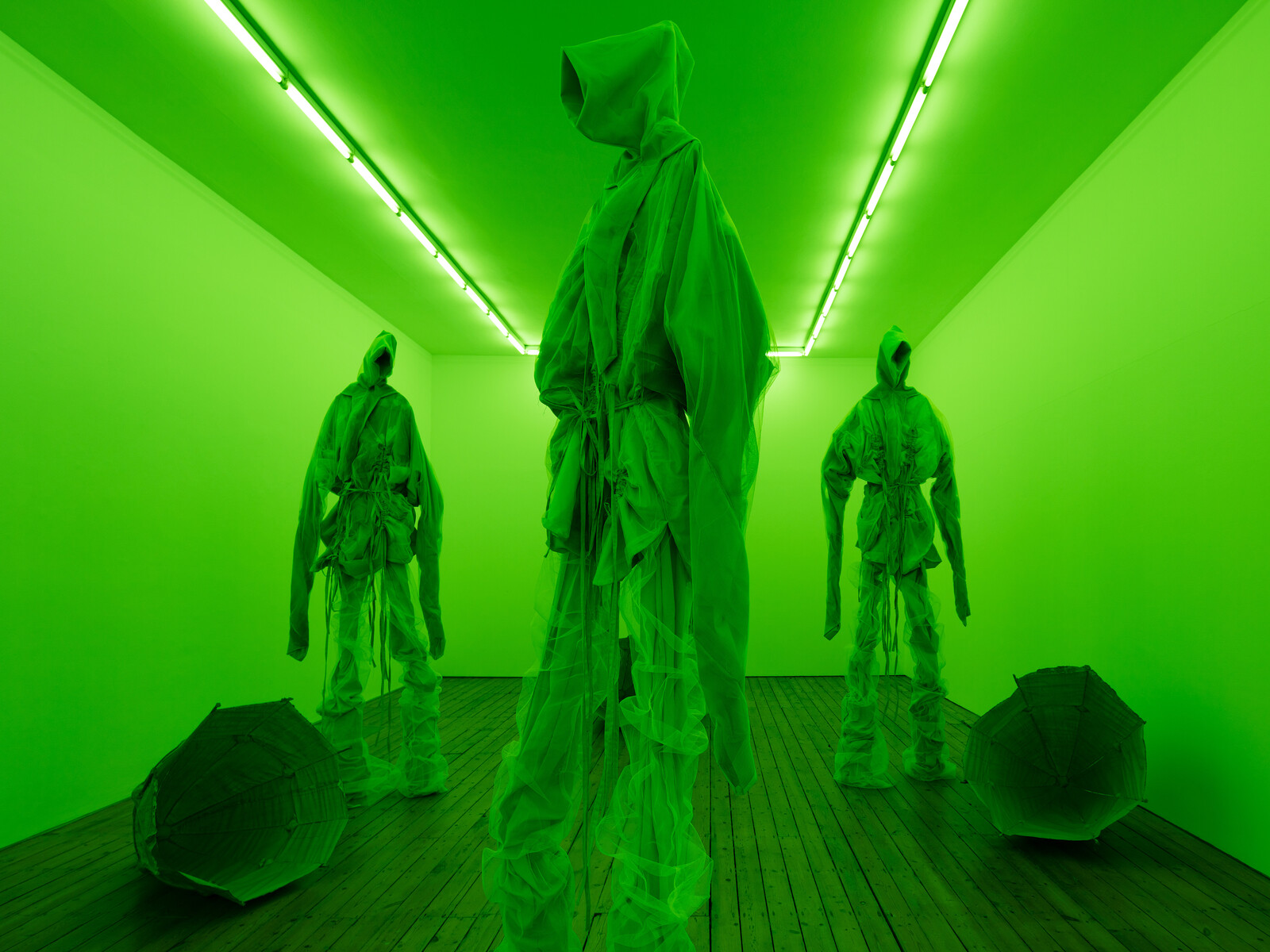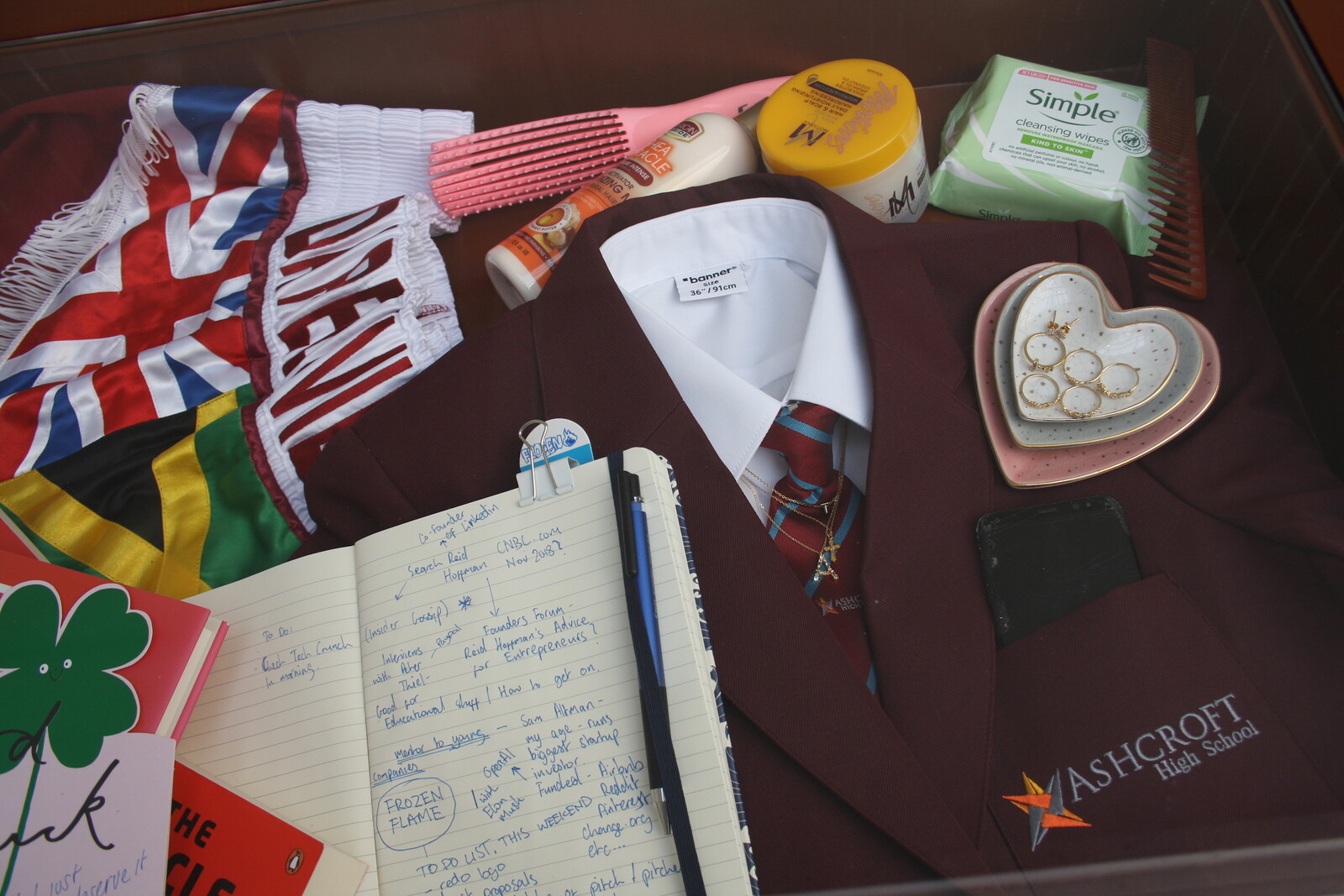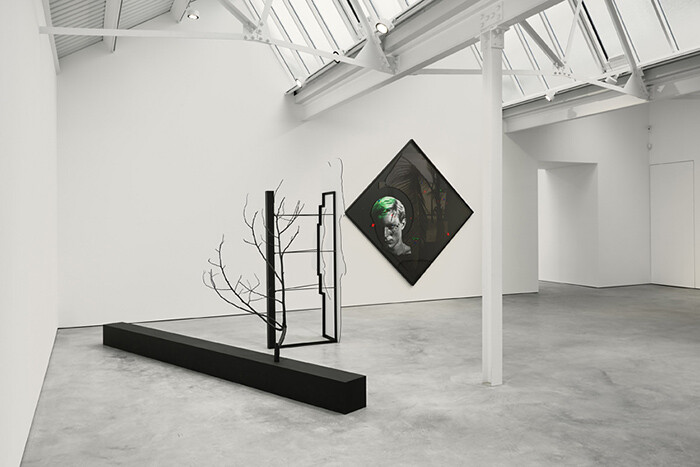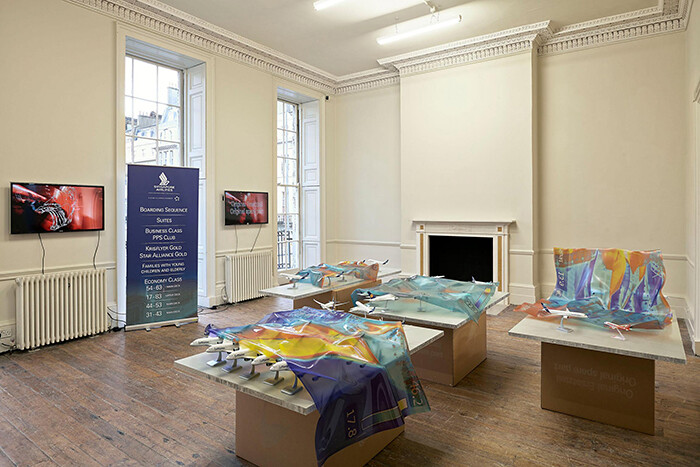Categories
Subjects
Authors
Artists
Venues
Locations
Calendar
Filter
Done
April 20, 2021 – Feature
London Roundup
Patrick Langley

London’s galleries are open again. Exhibitions that were paused or postponed last fall have emerged from enforced hibernation into a cultural environment altered by six months of—well, not very much. To a quarantine-addled critic, this presents a quandary. One of the pleasures—and pitfalls—of writing about art is using it as a measure of lived experience: of holding work up to the light and saying, ah yes, this reminds me of something. The problem is, I haven’t much new experience against which to gauge the work. But maybe I’m not alone. In the capital’s galleries I kept noticing pieces, many made over this past year, that described a version of the same space—an unstable interior, variously possessed and infiltrated by outside forces. Which is to say, a state of mind. Or was I just projecting?
Leidy Churchman’s “The Between is Ringing,” at Rodeo’s Bourdon Street space, is a small, rewarding show of a dozen new paintings that range from smudgy abstraction to cartoonish exuberance. The work subtitled Diptych (all works share a main title with the exhibition and are dated 2020) comprises two oil-on-linen paintings, stacked one atop the other, depicting an abstracted living room that is also an existential void. The …
October 9, 2020 – Feature
London Roundup
Chris Fite-Wassilak

It’s an unlikely benediction: two identical photos frame Dozie Kanu’s exhibition “Owe Deed, One Deep” at Project Native Informant: a small, slightly blurred image of a tower with a hand at the top, reaching awkwardly towards the sky. Emo State (2020) seems to have been taken from a moving car, the landscape around it giving some sense of the sheer scale of the tower, a religious monument modelled on the tower of Babel in southern Nigeria, constructed only a few years ago and torn down in 2019. The ghost of this demolished structure, the two hands waving over the five sculptural assemblages gathered below them, casts the works as their own temporary monuments, momentary markers to whatever spirit or feeling has possessed us, before disappearing. In a corner, St. Jaded Extinguish (2020) is a gray fire extinguisher stand placed forlornly on a flimsy, short set of black stairs, a bottle opener attached to its base that spells out a nihilistic mantra: “SELF SERVE.”
Making my way around exhibitions for the first time since February, it was such slight, haunted gestures that stuck with me. It feels disconcertingly normal to traipse around the city at this time of year, albeit with pre-booking …
March 14, 2019 – Review
Linder’s “Ever Standing Apart From Everything”
Chris Fite-Wassilak

Let’s put it all up front: this exhibition is made up of 73 small collages, created between 2007 and 2019, each featuring one or two human bodies, accumulatively displaying 23 nipples (four of which have a more apparently male owner), four pudenda, and one (erect) penis. Some of these people lounge about in bygone versions of tastefully decorated interiors, looking confidently into the middle distance; a few in a state of semi-undress contort into various suggestive poses, giving the camera a dead-eyed stare; most of them, though, are preoccupied with the furniture and silverware being shoved into various orifices. In The Model 5 (2015), one woman looks on while another has a set of black enamel drawers angled between her legs, while in Magnitudes of Performance III (2012), a man looks ready to introduce an old hi-fi amplifier to his supine male partner. Most of the imagery for these collages seems to come, to start with, from porn magazines, and the rest from home décor catalogues. The excerpts from the latter—sofas, vases, and one well-placed tiger-striped lounge chair—act like a form of comedy censorship, blocking out the revelations and penetrations of the former to give the new images a more …
March 20, 2015 – Review
Lothar Hempel’s “Tropenkoller”
Charlie Fox

“Tropenkoller” translates from German to English as “tropical frenzy,” but the climate seen in these ten pieces collected over the last five years and exhibited at Modern Art, London doesn’t really come from anywhere other than some intoxicated area within Lothar Hempel’s brain.
Throughout the two decades of his career, Hempel has tasked himself with the outlandishly difficult job of finding endless new ways to be strange—almost to the point of impenetrability. This activity has produced many enigmatic tableaux, staged with defaced cut-out figures and sculptural props—Slowdance (2015) includes a gnarly tree limb emerging from a stretch of painted steel—alongside gleefully mysterious collages. “Tropenkoller” tracks the sly continuation of Hempel’s venture at all its varying levels of opacity while capturing a fresh surge of invention that makes it feel more attractive and baffling than ever.
Arranged in their funky rhomboid frames, collages predominate, but there are two cut-outs stylishly adrift in the gallery’s main room. All the pieces encourage off-beam critique and outré guesswork while looking like a bunch of vaguely menacing hallucinations. The skies in Hempel’s collages come freaked with colored wire to short-circuit their holiday slideshow familiarity, or abstracted by inkjet pixelation into pure cosmic glitter. In the photomontage Storm …
January 24, 2014 – Review
Yngve Holen’s “Original Spare Part”
Anna Gritz

On a recent long-haul flight, I caught myself consumed by a scene on the little screen in front of me. In addition to the in-flight entertainment program and the animated map view, the interface offered a live feed from a camera attached to the bottom of the plane, tracking a vista down to Earth surrounded by the night sky. It was a curious deferral of information that—despite communicating live footage of my trip—felt artificial and removed. The images did not seem to match the view from my window and instead offered a glance at a different reality, as if I were looking at another Earth and tracking someone else’s travel, not my own.
The kind of alienation we develop towards our immediate surroundings—driven by radical social and technological changes and their resulting consolidation and internalization—is central to Yngve Holen’s work. The Norwegian artist’s first gallery show with Modern Art, which takes place in their interim space, an eighteenth-century townhouse in London’s Fitzrovia district, continues his investigation of the physical and psychological makeup of commodities and the spaces in which we encounter them—notwithstanding the irony that it is through the objects we create that we comprehend ourselves and our surroundings. Holen is …
